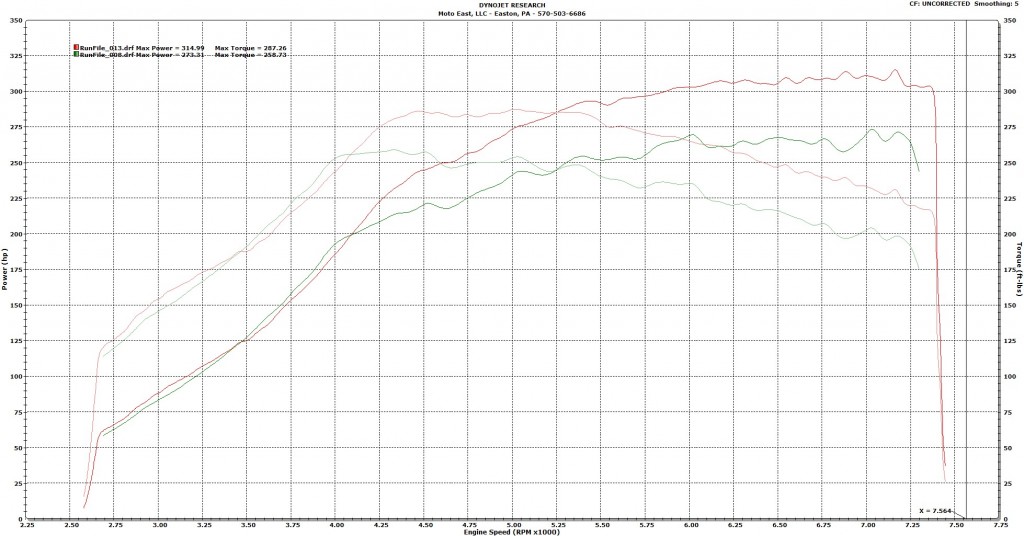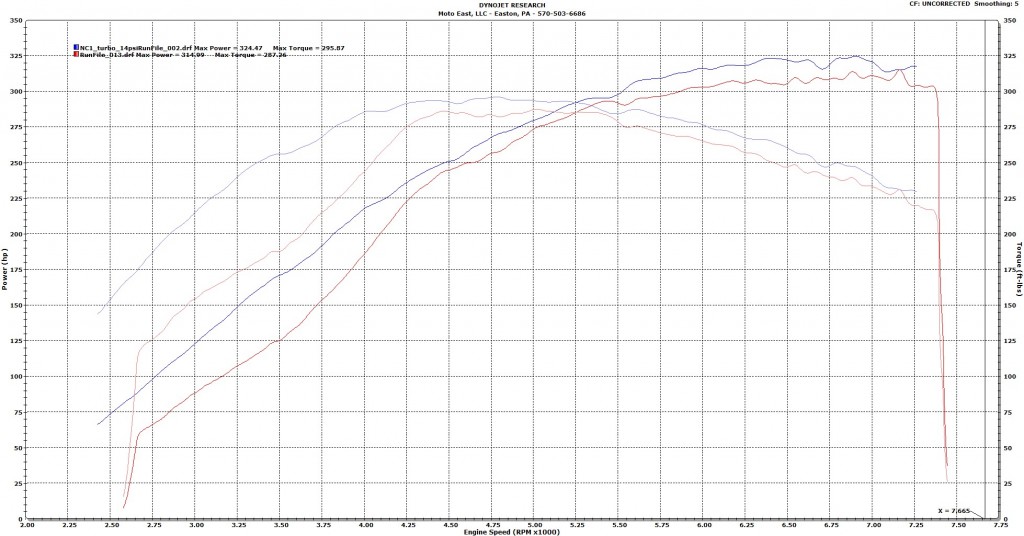Water/Methanol Injection & Turbo Size – Bigger is NOT Always Better
The other day we dyno tuned a turbo kit for a local customer on an MX5. Setup is an off the shelf turbo kit (shall be unnamed), injectors, fuel pump, water meth injection. The system would creep to 17 psi in the cold by 6800 RPM, once warm, 14 psi. This latest time he had brought it over to get water meth put in, and an EBC to just set the boost to 14 psi as it was creeping there anyway. This system unfortunately uses a 3″ downpipe from the turbo back, and an oversized GT30 turbo. The vehicle is a high compression 2.0l (10.8:1) and very limited space to put in a larger wastegate. For this reason a 2.5″ downpipe and a T25 flanged turbo is much more appropriate. Initially we tuned it over the winter working around the boost creep issues. That put us at 275 WHP. However we had to utilize advanced cam timing strategies and throttle management to reduce the boost creep at the top end. The plan was to do water/methanol injection come spring, and this was completed just recently. The dyno chart below shows the gains from doing just that. With the water/methanol injection, we were able to just set a level boost and not have to limit. We’re well over 300 to the wheels with this combination. With this setup now nearly mirroring our car from 2009/2010, we went ahead and overlaid the standard Bell Engineering turbo kit at 14 psi and water/meth injection. Both cars were running similar AFR and timing numbers, and the only difference being the turbo kit design. Now what you see is that the smaller turbo (GT28RS) makes over 50 ft/lbs more torque below 3800 RPM! So for a stock motor where you are highly unlikely to ever exceed 325 WHP, it makes very little sense to go with such a large turbo. A note on the plots: the dyno graphs are on different days under different conditions. So you if you normalize both the HP levels should be similar. However the gains down low are still 100% there.
With this setup now nearly mirroring our car from 2009/2010, we went ahead and overlaid the standard Bell Engineering turbo kit at 14 psi and water/meth injection. Both cars were running similar AFR and timing numbers, and the only difference being the turbo kit design. Now what you see is that the smaller turbo (GT28RS) makes over 50 ft/lbs more torque below 3800 RPM! So for a stock motor where you are highly unlikely to ever exceed 325 WHP, it makes very little sense to go with such a large turbo. A note on the plots: the dyno graphs are on different days under different conditions. So you if you normalize both the HP levels should be similar. However the gains down low are still 100% there.


Leave a Reply
You must be logged in to post a comment.